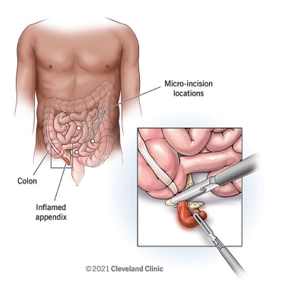The nurse is planning care for a client who has a fourth-degree midline laceration that occurred during vaginal delivery of an 8-pound 10-ounce (3674 grams) infant.
Which intervention has the highest priority for this client?
Administer prescribed PRN sleep medications.
Encourage use of prescribed analgesic perineal sprays.
Administer prescribed stool softener.
Encourage breastfeeding to promote uterine involution.
The Correct Answer is C
The correct answer is choice c. Administer prescribed stool softener.
Choice A rationale:
Administering prescribed PRN sleep medications can help the client rest, but it is not the highest priority. Managing pain and preventing complications from the laceration are more critical.
Choice B rationale:
Encouraging the use of prescribed analgesic perineal sprays can help manage pain and promote healing, but it is not as crucial as preventing constipation, which can cause significant discomfort and complications.
Choice C rationale:
Administering prescribed stool softeners is the highest priority because a fourth-degree laceration involves the anal sphincter and rectal mucosa. Preventing constipation is essential to avoid straining during bowel movements, which can cause pain and disrupt the healing process.
Choice D rationale:
Encouraging breastfeeding to promote uterine involution is important for postpartum recovery, but it is not directly related to the care of a fourth-degree laceration. Managing pain and preventing complications from the laceration take precedence.
Nursing Test Bank
Naxlex Comprehensive Predictor Exams
Related Questions
Correct Answer is D
Explanation
An 18-year-old client with a mild mental disability is a client who has a lower than average intellectual functioning and some limitations in adaptive skills, such as communication, socialization, and self-care. A mild mental disability may affect the client's ability to understand, cope, or cooperate with medical interventions, such as ambulation after surgery.
Ambulation is the act of walking or moving around. It is an important part of postoperative care, as it helps to prevent complications such as deep vein thrombosis, pulmonary embolism, pneumonia, atelectasis, constipation, and pressure ulcers. Ambulation also promotes circulation, wound healing, and muscle strength.
When the practical nurse (PN) atempts to assist the client to ambulate on the first postoperative day after an appendectomy, the client becomes angry and says, "PN, 'Get out of here! I'll get up when I'm ready!" This may indicate that the client is experiencing pain, fear, anxiety, or frustration due to the surgery and the recovery process .
The best response for the PN to make is to acknowledge the client's feelings, provide reassurance and support, and set a clear and realistic goal for ambulation. This will help to establish rapport, reduce resistance, and motivate the client to participate in the care plan.
Therefore, option D is the correct answer, as it shows empathy and respect for the client's feelings, while also informing the client of the expectation and time frame for ambulation. Option D also allows the client some time to prepare mentally and physically for the activity.

Correct Answer is D
Explanation
Choice A rationale:
Aspirin is not typically contraindicated in a client who has taken sildenafil unless there are specific contraindications or allergies. Aspirin is often used in the management of acute chest pain to help prevent blood clot formation.
Choice B rationale:
Heparin is not contraindicated solely because the client has taken sildenafil. Heparin is an anticoagulant commonly used in various clinical settings, including the management of certain cardiac conditions.
Choice C rationale:
Morphine is not necessarily contraindicated based solely on the client's use of sildenafil. Morphine can be used to relieve chest pain in some cases of acute coronary syndrome. However, its use should be carefully evaluated based on the client's overall clinical presentation.
Choice D rationale:
Nitroglycerin should be withheld in this scenario. Sildenafil is a medication used to treat erectile dysfunction and pulmonary arterial hypertension. It can potentiate the vasodilatory effects of nitroglycerin, leading to a severe drop in blood pressure. Concomitant use of nitroglycerin and sildenafil is contraindicated due to the risk of significant hypotension, which can be life-threatening.
Whether you are a student looking to ace your exams or a practicing nurse seeking to enhance your expertise , our nursing education contents will empower you with the confidence and competence to make a difference in the lives of patients and become a respected leader in the healthcare field.
Visit Naxlex, invest in your future and unlock endless possibilities with our unparalleled nursing education contents today
Report Wrong Answer on the Current Question
Do you disagree with the answer? If yes, what is your expected answer? Explain.
Kindly be descriptive with the issue you are facing.
